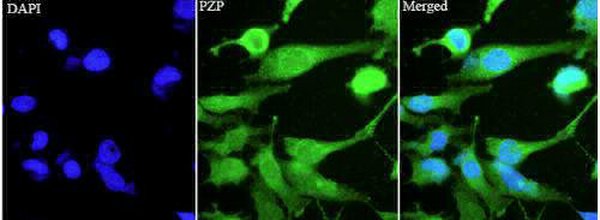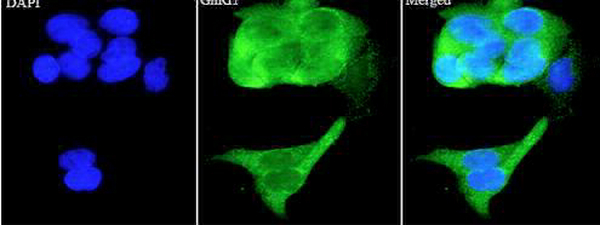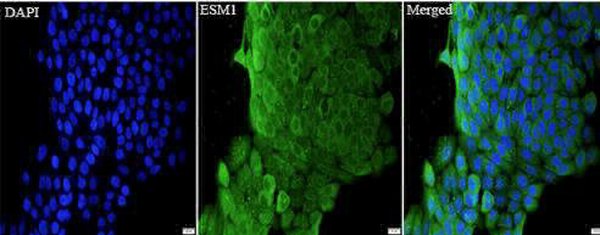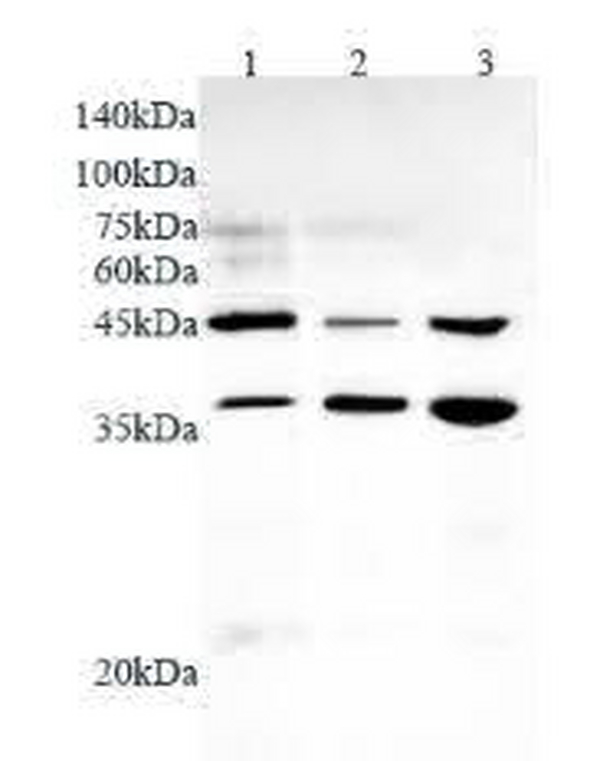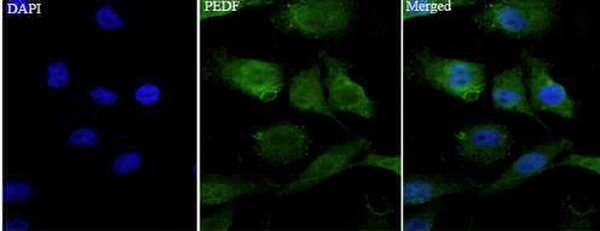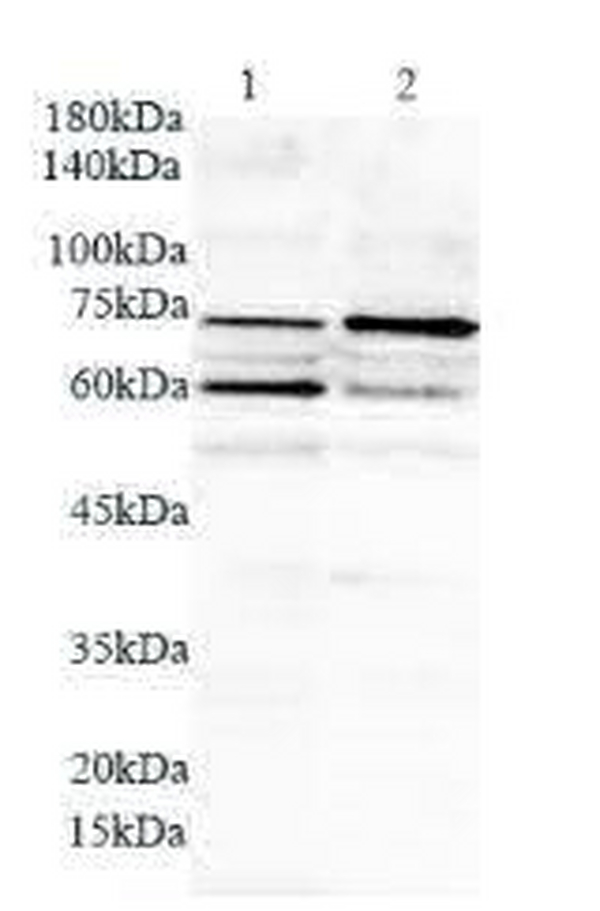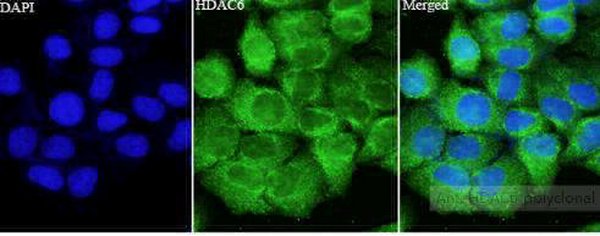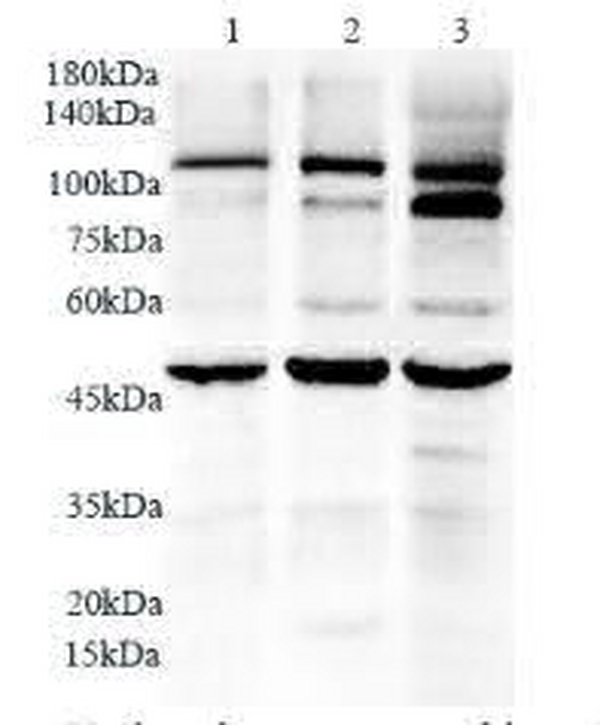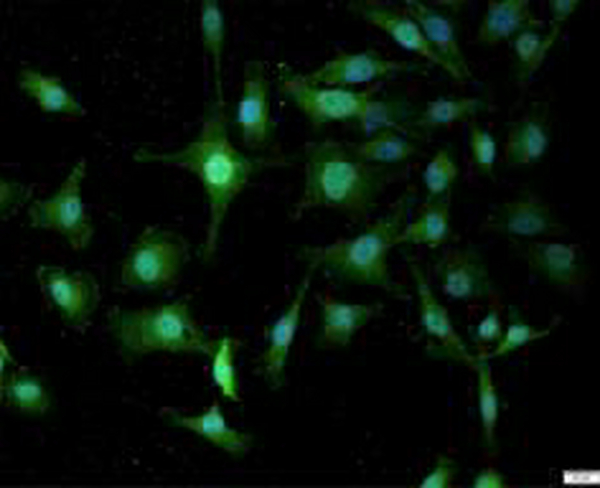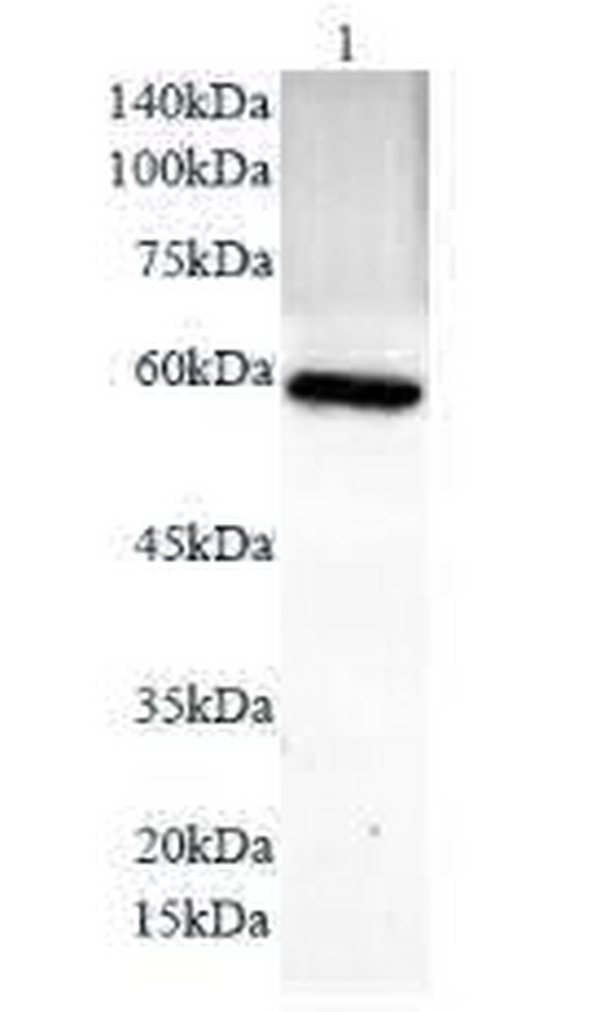QQ:3002763590


客服电话:021-61998208
Anti PZP polyclonal antibody
PZP抗体
Anti PZP polyclonal antibodyPregnancy Zone protein is a 1,482 amino acid secreted protein that belongs to the protease inhibitor I39 family and exists as multiple alternatively spliced isoforms. Expressed predominately in plasma and in late-pregnancy sera, Pregnancy Zone protein functions as a disulfide-linked homotetramer that is able to trap and inhibit proteinases, thus playing a role in the regulation of protein splitting and small peptide formation. The gene encoding Pregnancy Zone protein maps to human chromosome 12, which encodes over 1,100 genes and comprises approximately 4.5% of the human genome. Chromosome 12 is associated with a variety of diseases and afflictions, including hypochondrogenesis, achondrogenesis, Kniest dysplasia, Noonan syndrome and Trisomy 12p, which causes facial developmental defects and seizure disorders.
Anti GnRH1 polyclonal antibody
GnRH1抗体
Anti GnRH1 polyclonal antibodyThe protein encoded by this gene is secreted and then cleaved to form the 10 aa luteinizing hormone-releasing hormone (LHRH, also known as gonadoliberin-1), and prolactin release-inhibiting factor (also known as GnRH-associated peptide 1). LHRH stimulates the release of luteinizing and follicle stimulating hormones, which are important for reproduction. Mutation in this gene are associated with hypogonadotropic hypogonadism. Alternatively spliced transcript variants have been described for this gene. [provided by RefSeq, Jul 2012].
Anti mouse Esm1 polyclonal antibody
mouse Esm1抗体
Anti mouse Esm1 polyclonal antibodyESM1 is a secreted dermatan sulfate proteoglycan which is predominantly expressed in the endothelial cells in human lung and kidney tissues. Expression of ESM1 is regulated by cytokines. ESM1 may have a role in lung endothelial cell-leukocyte interactions. The transcript contains multiple polyadenylation and mRNA instability signals. Two transcript variants encoding different isoforms have been found for this gene.
Anti WNT5A polyclonal antibody
WNT5A抗体
Anti WNT5A polyclonal antibodyThe WNT gene family consists of structurally related genes which encode secreted signaling proteins. There are 19 Wnt genes in the human genome that encode functionally distinct Wnt proteins. These proteins have been implicated in oncogenesis and in several developmental processes, including regulation of cell fate and patterning during embryogenesis. Wnt members bind to the Frizzled family of seven-pass transmembrane proteins and activate several signaling pathway. Wnt5A is a member of the Wnt family of proteins, which are 38–45 kDa secreted cysteine-rich proteins with hydrophobic signal peptidesThis antibody can recognize WNT5A and WNT5B
Anti PEDF polyclonal antibody
PEDF抗体
Anti PEDF polyclonal antibodyPEDF also known as serpin F1 (SERPINF1), is a multifunctional secreted protein that has anti-angiogenic, anti-tumorigenic, and neurotrophic functionsis. It is an approximately 50-kDa secreted protein that is widely expressed, including by osteoblasts and osteoclasts. PEDF is also one of the most abundant secretory products of adipocytes, and circulating concentrations of PEDF correlate positively with body fat mass and insulin resistance. PEDF is a neurotrophic factor involved in neuronal differentiation in retinoblastoma cells. Mutations in this gene were found in individuals with osteogenesis imperfecta, type VI.
Anti PML polyclonal antibody
PML抗体
Anti PML polyclonal antibodyPML, also named as MYL, RNF71 and TRIM19, is a member of RBCC/TRIM family of proteins that possess a RING finger domain, B-box, and coiled-coil domain. It functions as tumor suppressor. PML is required for normal, caspase-dependent apoptosis in response to DNA damage, FAS, TNF, or interferons. It plays a role in transcription regulation, DNA damage response, DNA repair and chromatin organization. PML plays a role in processes regulated by retinoic acid, regulation of cell division, terminal differentiation of myeloid precursor cells and differentiation of neural progenitor cells. It regulates PTEN compartmentalization through the inhibition of USP7-mediated deubiquitinylation. A large number of alternative spliced transcripts are synthesized from the PML gene, resulting in a variety of PML proteins ranging in molecular weight from 48-97 kDa (PMID:11704850). And it can be detected as 70-130 kDa or larger due to the modification (especially SUMO) (PMID: 167781
Anti HDAC6 polyclonal antibody
HDAC6抗体
Anti HDAC6 polyclonal antibodyHistone deacetylases(HDAC) are a class of enzymes that remove the acetyl groups from the lysine residues leading to the formation of a condensed and transcriptionally silenced chromatin. At least 4 classes of HDAC were identified. HDAC6 is a member of the class II mammalian histone deacetylases. It possesses two separate putative catalytic domains. Both catalytic domains are fully functional HDACs and contribute independently to the overall activity of HDAC6 protein. A very potent NES is present at the amino-terminus of HDAC6, which was found to play an important role in regulating the shuttling of HDAC6 protein between cytoplasm and nucleus. The shuttling process may be a critical regulatory mechanism of HDAC6 function. The expression of HDAC6 is tightly linked to the state of cell differentiation. HDAC6 may participate in coordinating expression of a group of genes involved in the remodelling of chromatin during cell differentiation. HDAC6 has some splic
Anti TLR7 polyclonal antibody
TLR7抗体
Anti TLR7 polyclonal antibodyKey component of innate and adaptive immunity. TLRs (Toll-like receptors) control host immune response against pathogens through recognition of molecular patterns specific of microorganisms. TLR7 is a nucleotide-sensing TLR which is activated by single-stranded RNA. Acts via MYD88 and TRAF6, leading to NF-kappa-B activation, cytokine secretion and the inflammatory response.
Anti NOX4 polyclonal antibody
NOX4抗体
Anti NOX4 polyclonal antibodyNOX4 (NADPH oxidase 4) is a phagocyte-type oxidase, similar to that responsible for the production of large amounts of reactive oxygen species (ROS) in neutrophil granulocytes with resultant antimicrobial activity and it has been postulated to function in the kidney as an oxygen sensor that regulates the synthesis of erythropoietin in the renal cortex. NOX4 has some isoforms and the molecular weight are 7KDa,26-32KDa,58-67KDa,75-80KDa(PMID:11728818).
Anti PDL1 polyclonal antibody
PDL1抗体
Anti PDL1 polyclonal antibodyProgrammed cell death ligand 1 (PD-L1, CD274, or B7-H1), is the first member of B7 family to be discovered. B7 family molecules are type I transmembrane proteins belonging to the immunoglobulin superfamily. In concert with their CD28 family receptors, the B7s are key regulators of the adaptive immune response. PD-L1 is suggested as a negative regulator of T and B cell, and plays important role in mediating tolerance of lymphocytes to self-antigens. It is also involved in the costimulatory signal, essential for T-cell proliferation and production of IL10 and IFNG, in an IL2-dependent and a PD-1-independent manner. PD-L1 is a 290 aa transmembrane protein with a calculated molecular weight of 33 kDa, it is predicted to be 27-30 kDa after signal peptide cleavage (PMID: 25609200,17076679). The apparent molecular weight has also been reported as 45-70 kDa, major glycosylated form of 45-50 kDa and multiple post-translational modifications form of 65-70 kDa (PMID:
最新动态
-
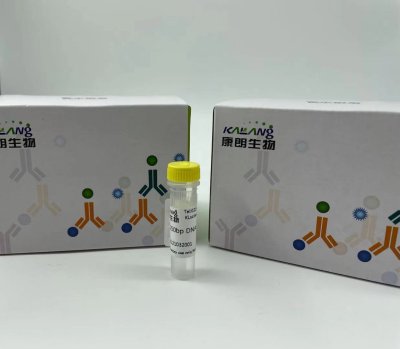
Anti-GNGT1 KL20092-001(50ul)
2021-10-11 -

Anti-GNGT1 antibody(50ul) KL20093-001
2021-10-11 -
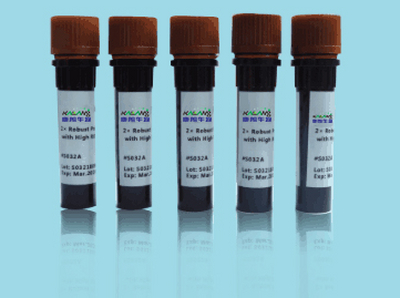
MUC5AC (PT2058) mouse Monoclonal Antibody
2021-01-06 -

mOrange mouse Monoclonal Antibody(Mix)
2021-01-05
热门标签
- Histone H3 rabbit Polyclonal Antibody Histone H3抗体
- EGFR rabbit Polyclonal Antibody EGFR抗体
- Cy3 Conjugated
- AbFluor™ 555 Conjugated
- AbFluor™ 680 Conjugated
- AbFluor™ 350 Conjugated
- AbFluor™ 647 Conjugated
- AbFluor™ 594 Conjugated
- AbFluor™ 405 Conjugated
- Cy5 Conjugated
- AbFluor™ 488 Conjugated
- Cyclophilin B抗体 Cyclophilin B Monoclonal Antibody(2B10)
- COX IV抗体 COX IV Monoclonal Antibody(6C8)
- PCNA抗体 PCNA Monoclonal Antibody(12D10)
- FAK rabbit Polyclonal Antibody FAK抗体
邮箱:3002763590@qq.com
电话:021-61998208

扫码关注微信公众号



